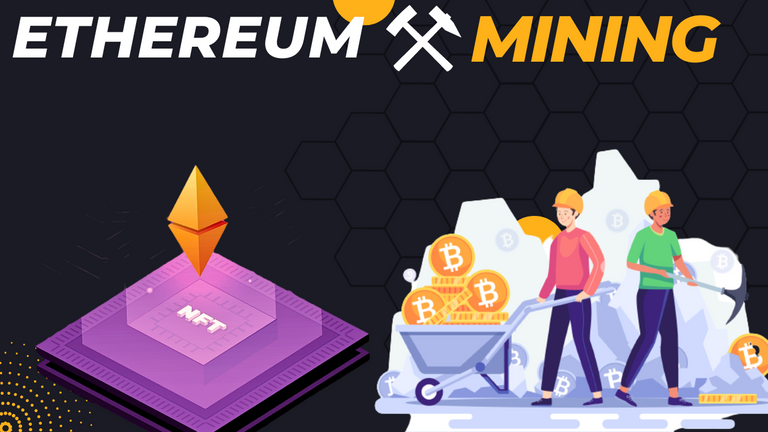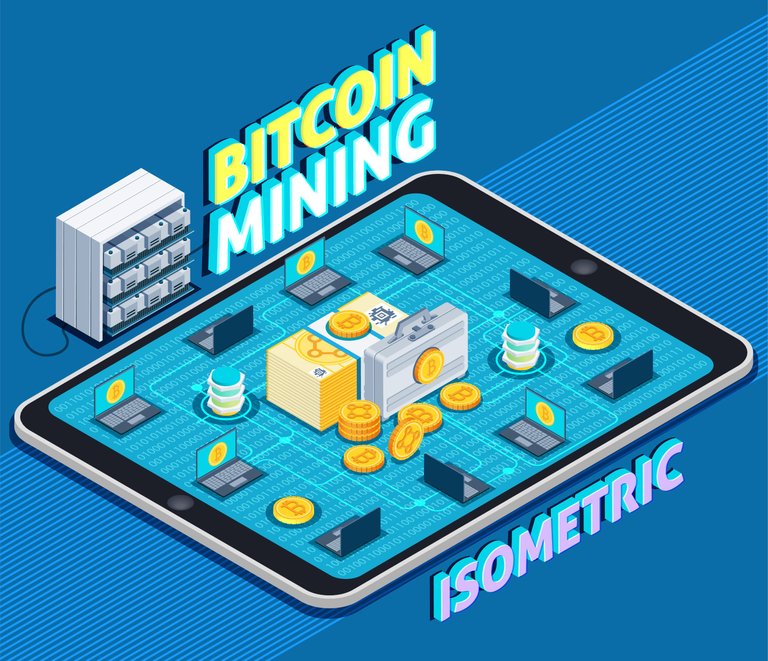Hello My Fellow Leo Warriors,
I hope all of you are well and Completing your Zealy task everyday.
I am also did the same By the way I am already step towards 12K+ XP On the quest. Don't forget to tell your XP on the quest.
Ok, On today's blog I am going to discuss about Ethereum Mining for the #cyoa on Zealy.

I have already wrote about Ethereum & Polygon On my Previous Blogs.
I hope you like this Blog too.
Before Jump Into the main topi, At first let's know what is Ethereum Actually.

What is Ethereum Mining ?
Ethereum mining is the process of using powerful computers to help verify and validate transactions on the Ethereum network. Miners solve complex mathematical puzzles to add new blocks of transactions to the blockchain, the digital ledger that records all Ethereum transactions. By doing this work, miners ensure that transactions are legitimate and secure. In return for their efforts, miners are rewarded with newly created Ethereum coins.
Mining is important for maintaining the security and integrity of the Ethereum network and for creating new Ethereum coins.
Ethereum mining involves using specialized computer hardware to solve complex mathematical problems, known as proof-of-work or PoW algorithms. Miners compete to solve these algorithms, and the first miner to find the correct solution is rewarded with Ether. This process is known as "mining" because it bears a resemblance to extracting precious resources from the ground, akin to mining gold

Significance of Ethereum Mining :
The significance of Ethereum mining lies in its contributions to the functionality, security, and growth of the Ethereum network. Here are some key aspects highlighting the significance of Ethereum mining:
Transaction Verification : Ethereum mining plays a vital role in verifying and validating transactions on the network. Miners use their computational power to solve complex mathematical puzzles, which helps confirm the authenticity and legitimacy of transactions. This verification process ensures that only valid transactions are included in the blockchain, preventing double-spending and maintaining the integrity of the network.
Network Security : Mining is crucial for maintaining the security of the Ethereum network. Miners collectively contribute their computational power to secure the network against potential attacks and malicious activities. The decentralized nature of mining ensures that no single entity can gain control over the network, making it more resilient and resistant to censorship or manipulation.
Creation of New Ether : Ethereum mining is responsible for minting new Ether coins and regulating the supply of the cryptocurrency. Miners are rewarded with freshly created Ether for successfully mining a block and adding it to the blockchain. This reward incentivizes miners to participate in the network and provides a mechanism for the distribution of Ether.
Decentralized Consensus : Ethereum mining is an integral part of the consensus mechanism in the current proof-of-work (PoW) system. Through mining, consensus is achieved as miners compete to solve complex mathematical puzzles to validate transactions and create new blocks. Consensus ensures that all nodes in the network agree on the state of the blockchain, facilitating trust and eliminating the need for centralized intermediaries.
Ecosystem Growth : The mining process fosters the growth and development of the Ethereum ecosystem. Miners provide the necessary infrastructure and computational resources to support decentralized applications or dApps, smart contracts, and other innovations built on the Ethereum platform. Mining encourages participation and investment in the ecosystem, promoting technological advancements and expanding the range of applications that can be built on Ethereum.
Economic Incentives : Mining offers economic incentives for individuals and entities to participate in the Ethereum network. Miners earn rewards in the form of newly minted Ether and transaction fees for their efforts. These incentives not only compensate miners for their computational work but also stimulate network activity and provide a means for individuals to engage in the cryptocurrency economy.
NOTE :-
Ethereum mining is significant as it enables transaction verification, contributes to network security, creates new Ether, facilitates decentralized consensus, promotes ecosystem growth, and provides economic incentives. It is a crucial component that supports the decentralized nature and functionality of the Ethereum blockchain, paving the way for innovation and the development of decentralized applications.

THE MINING PROCESS OF ETHEREUM ::-
The mining process in Ethereum involves several steps that miners follow to validate transactions, secure the network, and earn rewards in the form of Ether (ETH). Here is a simplified overview of the mining process:
- Hardware Setup :
Miners need specialized computer hardware to mine Ethereum effectively. This typically includes powerful graphics processing units (GPUs) or application specific integrated circuits (ASICs). Miners assemble these components into mining rigs to harness their computational power.
- Mining Software Installation :
Miners install mining software on their rigs, which allows them to connect to the Ethereum network and participate in the mining process. Popular mining software options include Ethminer, Claymore, etc.
- Joining a Mining Pool :
Due to the increasing difficulty of mining Ethereum, many individual miners join mining pools. Mining pools are groups of miners who combine their computational resources to increase their chances of mining a block and earning rewards. By joining a mining pool, miners have a more consistent and predictable income stream, although the rewards are shared among pool participants.

- Block Verification :
Miners' rigs continuously work to solve complex mathematical puzzles called proof-of-work (PoW) algorithms. These algorithms serve as a security measure to verify and validate transactions on the Ethereum network. Miners compete against each other to find the correct solution to the puzzle.
- Block Propagation :
Once a miner successfully solves a PoW algorithm, they broadcast the solution, along with the block of transactions they have validated, to the Ethereum network. Other nodes on the network receive the block and verify its authenticity.
- Consensus and Reward :
Once the network reaches a consensus that the block is valid, it is added to the blockchain, and the miner who discovered the solution is rewarded with a certain amount of Ether. This reward serves as an incentive for miners to continue participating in the mining process. In addition to the block reward, miners may also receive transaction fees associated with the transactions included in the block.
- Mining Continuation :
After a block is mined, the mining process continues, and miners move on to work on the next block. This process repeats indefinitely as new transactions are added to the Ethereum network, and miners compete to validate them.
NOTE :-
Ethereum is in the process of transitioning from a proof-of-work (PoW) consensus mechanism to a proof-of-stake (PoS) mechanism through Ethereum 2.0. In PoS, miners will no longer need to solve complex algorithms but instead will be able to validate transactions and secure the network by staking their Ether as collateral. This transition will significantly change the mining process in Ethereum and address concerns related to energy consumption and scalability.

Negative Effects Of Ethereum Mining ::-
Ethereum mining, like any other mining activity, has negative effects that need to be considered. Here are some of the negative effects associated with Ethereum mining:
Energy Consumption :
Ethereum mining, particularly under the proof-of-work (PoW) consensus mechanism, requires significant computational power and energy consumption. The mining process involves solving complex mathematical puzzles, which demands a large amount of electricity. As a result, mining operations contribute to high energy consumption and carbon emissions, raising environmental concerns.
Environmental Impact :
The energy-intensive nature of Ethereum mining, coupled with the reliance on fossil fuel-based energy sources, has a negative impact on the environment. Increased energy consumption leads to increased carbon emissions and contributes to climate change. Additionally, the mining process requires the use of electronic components, which can contribute to electronic waste if not properly managed.
Centralization Risks :
With the increasing difficulty and resource requirements of mining Ethereum, there is a risk of centralization in mining operations. Large-scale mining farms and mining pools that have access to significant computational power and resources can dominate the mining ecosystem. This concentration of power raises concerns about the decentralization and security of the network, as it can potentially lead to collusion or manipulation of the blockchain.
Hardware Costs and Scarcity :
Ethereum mining requires specialized hardware, such as powerful graphics processing units (GPUs) or application-specific integrated circuits (ASICs). The demand for such hardware can lead to increased costs and scarcity, making it difficult for individual miners or small-scale operations to enter the mining ecosystem. This can contribute to the centralization of mining power in the hands of a few entities with significant resources.
Economic Inequality :
The high costs associated with mining hardware and the concentration of mining power can contribute to economic inequality within the Ethereum ecosystem. Individuals or organizations with limited resources may struggle to compete with larger mining operations, reducing their ability to participate and benefit from the mining rewards. This can create disparities and limit opportunities for broader participation and distribution of wealth within the ecosystem.
It's worth noting that Ethereum is actively working on addressing these negative effects by transitioning to a more energy-efficient and sustainable consensus mechanism called proof-of-stake (PoS) through Ethereum 2.0. PoS aims to significantly reduce energy consumption, alleviate environmental concerns, and mitigate centralization risks by allowing users to validate transactions and secure the network through staking rather than resource-intensive mining.

What is Node Validation ?? ::-
Node validation refers to the process by which individual nodes in a blockchain network verify the accuracy and integrity of transactions and blocks. Nodes are computers or devices running the blockchain software that participate in maintaining and securing the network. Validation is a crucial aspect of blockchain technology as it ensures that only valid transactions and blocks are added to the blockchain.
In the context of Ethereum or any other blockchain network, node validation involves the following steps:
Receiving Transactions : Nodes receive transactions propagated throughout the network. These transactions contain information such as the sender, recipient, amount, and any associated data.
Verification of Transactions : Each node validates incoming transactions by checking various criteria. This includes verifying the digital signatures of the transactions, confirming that the sender has sufficient funds to carry out the transaction, and ensuring that the transaction adheres to the network's consensus rules.

Transaction Pool : Valid transactions are stored in a transaction pool, also known as a mempool, where they wait to be included in a block by miners. Nodes continuously update their transaction pools to maintain the most up-to-date list of pending transactions.
Block Validation : Once a miner successfully mines a block, they propagate it to the network. Each node then independently validates the block by performing several checks. These checks include verifying the transactions included in the block, ensuring that the transactions have not been double-spent, and validating the block's integrity through cryptographic hashes.
Consensus Mechanism : In a proof-of-work (PoW) blockchain like Ethereum, nodes participate in the consensus process by validating blocks and competing to solve the cryptographic puzzle associated with mining. Consensus is achieved when a majority of nodes agree that a particular block is valid and should be added to the blockchain.
Chain Continuity : Nodes also verify the continuity of the blockchain by checking the previous block's hash, linking each block to its predecessor. This ensures that the blockchain forms an unbroken, chronological chain of validated blocks.

CONCLUSION ::-
.gif)
Ethereum mining is the process of using powerful computers to solve puzzles and verify transactions on the Ethereum network. Miners play a crucial role in securing the network, validating transactions, and earning rewards in the form of Ethereum coins. However, it's important to note that Ethereum mining can have negative effects such as high energy consumption and the potential for centralization. To address these concerns, Ethereum is transitioning to a more energy-efficient and sustainable consensus mechanism called proof-of-stake. This transition aims to make Ethereum mining more eco-friendly and accessible to a wider range of participants. Ethereum mining is a fundamental process that powers the Ethereum blockchain, enabling it to function as a decentralized and secure network. Mining plays a crucial role in verifying transactions, securing the network, and minting new Ether (ETH) coins. In this essay, we will explore the basics of Ethereum mining, its significance, and how it contributes to the growth of the Ethereum ecosystem. Ethereum mining is an important aspect of the Ethereum ecosystem, ensuring the integrity and security of transactions while contributing to the growth and development of the digital currency.

That's all for the day Guyz, I hope you enjoyed my blog.
You Guyz are awesome ☺️
Stay safe Be Cool 😎


Posted Using LeoFinance Alpha